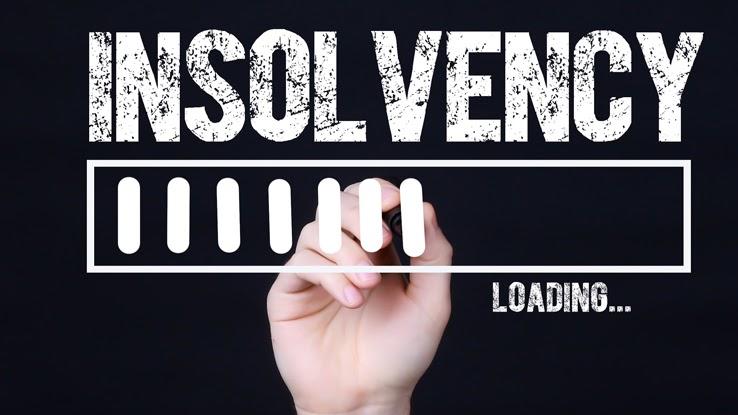
Financial laws around the world can vary from those found in the U.S. In Australia, insolvency laws regulate the affairs of a company that can no longer pay its financial obligations. The most common procedures in the country for handling insolvency are voluntary administration, liquidation and receivership.
Governed by the Corporations Act of 2001, Australian insolvency laws primarily exist to establish and maintain a balance between the interests of a company that has become insolvent, its creditors and the general community that could also be affected by the company’s financial difficulties. Australian law uses the term “insolvency” to refer to companies and bankruptcy in reference to individuals.
Warning Signs for Insolvency
A company becomes insolvent when it no longer has the resources to pay its creditors when credit payments or lump sum amounts become due. This inability to fulfill its financial obligations quickly leads to mounting financial troubles if the issue isn’t quickly addressed. Australian law establishes specific criteria for insolvency, and business experts point to several signs that a company could soon face insolvency. These signs include continuing quarterly and annual financial losses, overdue tax liabilities and liquidity ratios that are below one.

Another sign that a company could become insolvent is deteriorating relationships with banking institutions. When these relationships become strained, it makes it very difficult for the company to obtain additional funding when they need it. Companies that are insolvent also usually lose the ability to raise equity capital, and their suppliers may only honor collect-on-delivery (COD) transactions or require “ransom” payments before transactions can proceed.
Establishing a Presumption of Insolvency
In some instances, creditors can rely on presumptions of insolvency if providing proof of the insolvency is next to impossible. This paves the way for the company to apply for bankruptcy proceedings for the company. During the three months prior to the filing of the application, at least one financial issue must have occurred with the company.

One qualifying factor is the failure of the debtor company to comply with the statutory demand from the creditor. Another factor would be an unsatisfied — in part or in full — judgment granted by a court in favor of the creditor. Another situation where a company could be presumed to be insolvent is if an order was issued to appoint a receiver to enforce a floating charge, and that individual was appointed to assume possession of a company asset.
Basic Elements of Australian Insolvency Laws
Once a company is determined to be insolvent, the company’s assets and finances are evaluated to see if the company can recover and weather the financial slump or if it has no realistic chance of regaining its financial viability. If the company is deemed to be salvageable, it can enter into a nonliquidation agreement with its creditors, or it can choose to proceed with formal insolvency proceedings.

One of the provisions in Australian insolvency laws aims to provide equal, fair, organized means of handling insolvency proceedings. It ensures that there’s an equitable distribution of the company’s assets to its creditors and other claimants. Australian insolvency laws are supposed to ensure that the debts are satisfied and that the insolvency proceedings are resolved as quickly — and with as little expense — as possible.
Australia’s insolvency laws also have mechanisms in place to help the company recover if officials determine there’s a chance for the company to move beyond its financial distress. Likewise, the laws provide that both the company and its creditors should have equal and fair involvement and contribution in the resolution of the insolvency issue. The laws also dictate that the company’s directors, officers and associates be investigated to determine why the company became insolvent.
Common Insolvency Provisions in Australia
According to Australian laws, insolvent companies may choose to undergo a number of procedures, the most common of which are voluntary administration, liquidation and receivership. Voluntary administration is a restructuring option for companies facing insolvency to help them stave off liquidation or a winding-up procedure. Companies that have a realistic chance of recovering often initiate proceedings for this option. A deeds of company arrangement (DOCA) is another type of voluntary restructuring option.

Liquidation, on the other hand, occurs when all the remaining assets of the company are collected, appraised and then sold. The proceeds of the sale are used to satisfy the company’s debts and obligations. Any balance that remains after the payment of the debts and any costs incurred while liquidating the company are equitably divided among the owners according to their rights and interests. The liquidation process may be voluntary or could be compulsory.
The process of receivership involves a receiver who “receives” the assets that secured the debt, sells them and then uses the proceeds to satisfy the debt. In the Corporations Act of 2001 this person is referred to as the controller. A secured creditor pursuant to a security arrangement with the debtor company usually initiates this insolvency procedure. The secured creditor appoints two or more receivers in the event that one cannot fulfill the duties of the appointment due to ill health or death.
Some financial experts view Australia as a creditor-friendly jurisdiction where the interests of creditors are given more weight. Australian insolvency laws actually help strike a balance between the interests of debtor companies and their creditors. The purpose is for the laws to encourage companies to engage in healthy risk-taking but discourage them from reckless borrowing.





